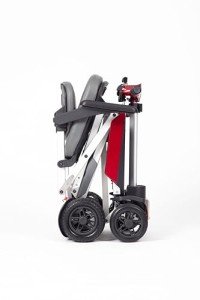Portable Mobility Scooters: Enhancing Freedom and Independence
As the world increasingly moves towards inclusivity and availability, portable mobility scooters have emerged as an advanced solution for people with mobility obstacles. These compact, easy-to-transport scooters are created to empower users with the capability to navigate their environments with confidence and ease. In this blog site post, we will check out the qualities, benefits, and factors to consider when selecting a portable mobility scooter, supported by tables and FAQs to supply a comprehensive introduction.
Understanding Portable Mobility Scooters
Portable mobility scooters are lightweight, battery-operated cars that offer an alternative mode of transportation for those with restricted mobility. Assembled utilizing durable materials, they are specifically engineered to be lightweight and compact to facilitate easy transport in cars or on public transportation.
Key Features of Portable Mobility Scooters
| Feature | Description |
|---|---|
| Weight Capacity | The majority of scooters can support users weighing between 250 to 500 pounds |
| Battery Life | Typical variety of 10 to 30 miles per charge |
| Speed | Typically operates between 4 to 8 mph |
| Turning Radius | Varies from 32 to 60 inches, making them appropriate for indoor use |
| Foldability | Many models can be easily folded for transport |
| Wheels | Typically equipped with either solid or pneumatic tires |
Portable mobility scooters are ideal for both indoor and outside use, supplying stability and ease of motion.
Advantages of Portable Mobility Scooters
- Improved Freedom: Users can take part in activities that were previously difficult, such as shopping and socializing, therefore improving general quality of life.
- Transport Convenience: Many portable scooters can be easily dismantled or folded, permitting users to transfer them in cars, vans, or public transportation.
- Cost-Effective: Compared to powered wheelchairs, portable scooters are often more economical, providing an economical service.
- User-Friendly Design: Most models include intuitive controls, making them simple to run for people of any ages.
- Range of Options: With numerous brands and models on the marketplace, possible users can choose scooters that fit their particular needs-- ranging from off-road use to compact indoor options.
Essential Considerations When Choosing a Portable Mobility Scooter
- Weight and Portability: Assess the weight of the scooter itself and its components. Lighter designs are normally simpler to carry.
- Battery Life and Range: Consider how far you require to travel on a single charge. If you anticipate long journeys, a scooter with an extended battery life is vital.
- Size and Dimensions: Measure where you'll save the scooter and ensure it fits comfortably in your automobile or home.
- Comfort Features: Look for scooters with adjustable seats, armrests, and other ergonomic features for added comfort during use.
- Surface Compatibility: If you prepare to utilize the scooter outdoors, guarantee it can manage numerous terrains (e.g., gravel, yard) with ease.
| Factor to consider | Significance |
|---|---|
| Weight & & Portability | Affects ease of transport and storage. |
| Battery Life | Identifies range and freedom to explore. |
| Size | Crucial for storage and maneuverability. |
| Convenience Features | Boosts the overall user experience. |
| Terrain Compatibility | Guarantees versatility in outside conditions. |
Frequently Asked Questions (FAQs)
1. How quickly can a portable mobility scooter go?
Most portable mobility scooters can reach speeds between 4 to 8 miles per hour. However, my webpage might differ based on the model and the weight of the user.
2. Do portable mobility scooters need a license or registration?
In most nations, portable mobility scooters do not need a motorist's license or registration, but it's necessary to examine local policies.
3. What is the typical price series of portable mobility scooters?
Prices typically range from ₤ 600 to ₤ 3,000 or more, depending upon features, brand name, and specs.
4. Can portable mobility scooters be used on mass transit?
Yes, many public transport systems accommodate portable mobility scooters, however it's recommended to examine in advance regarding policy details and space limitations.
5. What are the maintenance requirements?
Regular upkeep includes battery checks, tire examinations, and keeping the scooter tidy. It's advised to seek advice from the user manual for particular upkeep guidelines for your design.
Portable mobility scooters have actually become a lifeline for many people looking for independence and mobility in their every day lives. Their convenience, ease of use, and variety of readily available models allow users to pick the ideal scooter to fit their lifestyle.
For anybody thinking about buying a portable mobility scooter, it's vital to assess individual requirements carefully and explore various options on the market. With the right choice, these scooters can considerably boost mobility and assist in a more active way of life, ultimately leading to improved health and wellbeing.
By understanding the functions and aspects associated with choosing a portable mobility scooter, users can take the initial step towards declaring their freedom again. Whether for running errands, enjoying the outdoors, or merely moving the home, portable mobility scooters redefine what it means to stay active and participated in life.

